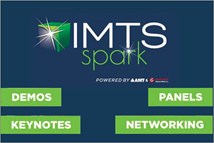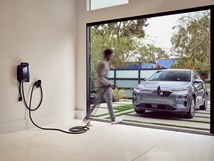Home Is Where the EV Charges
Electrify America launches new unit to sell home charging units
#hybrid
As it continues to expand its network of public charging stations across the U.S., Volkswagen’s Electrify America (EA) unit is increasingly targeting another electric vehicle battery outlet: home charging.
The reason? About 80% of owners rely on their own devices (at home charging) to replenish EV batteries.
Home Base
Hoping to cash in on the home market, EA is launching a separate business unit—Electrify Home—to sell the Level 2 charger the company introduced last autumn.

(Images: Electrify America)
The $450 unit, which had been available only through Amazon.com, now will be sold directly on EA’s web site. Customers also can find, book and pay for local installers— via Qmerit—and access 24-hour customer support through Electrify Home.
EA’s initial home charger is a 240-volt Level 2 system with 7.6 kW of power that the company says can charge a vehicle six times faster than by using a standard 120-volt household outlet. The system includes a docking station that can be mounted indoors or outdoors, a 24.6-ft cable and a color-coded LED status indicator.
EA plans to offer additional home charging systems later.
Why it Matters
Faster home charging systems will help boost EV sales by creating “a connected and smart home charging ecosystem,” according to EA.
“EV drivers need more charging options to feel truly independent and confident in their decision to go electric,” asserts Nina Huesgen, EA’s senior manager in charge of Home and eCommerce products.
Growing Infrastructure
EA has opened 436 public charging stations—equipped with more than 2,000 chargers—for plug-in hybrid and electric vehicle owners across the U.S. since VW formed the company in early 2017 as part of its diesel emissions cheating settlement.

The network includes a coast-to-coast corridor (2,700 miles through 11 states) from Los Angeles to Washington, D.C., that was completed this summer. By the end of next year, EA plans to nearly double its capacity to some 800 stores and 3,500 chargers, which will include a mix of 150-kW Level 3 units and 350-kW Level 3 systems.
EA’s expansion and similar growth by rival charging providers will go a long way to build a nationwide EV infrastructure and alleviate range anxiety concerns.
Wider availability of Level 2 home systems should further speed the effort, especially as costs come down.
RELATED CONTENT
-
Rage Against the Machine
There have been more than 20 reported attacks against Waymo’s self-driving fleet in Chandler, Ariz., since the company began testing the technology on public roads there two years ago.
-
ZF in the Oasis
What you’re looking at is the “Intelligent Rolling Chassis” ZF has developed for the Rinspeed Oasis, a concept vehicle.
-
Startup Readies Solar-Powered EV
Germany’s Sono Motors GmbH says it has received 5,000 orders for its upcoming Sion electric car, which can be partially recharged by it attached solar panels.








